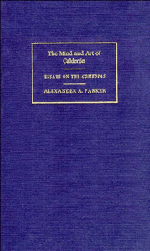Introduction
Published online by Cambridge University Press: 05 February 2012
Summary
Plays and playhouses
The Spanish Drama of the Golden Age (sixteenth and seventeenth centuries) is one of the most important in world literature. In most respects it differs from other contemporary dramas, being most like the Elizabethan and most unlike the French. It grew out of the demand for popular entertainment in the streets and squares of the towns, and never became entertainment directed exclusively at an educated upper-class audience.
The plays are divided into three classes. The auto sacramental derived from the oldest tradition, representing the Liturgical, Miracle and Morality plays of the Middle Ages, a tradition which in Spain alone survived the classicising culture of the Renaissance and the religious turmoils of the Reformation. As in the rest of Europe these plays were open-air performances on the Feast of Corpus Christi. Around the middle of the sixteenth century they had become directly associated with the celebration of the Feast in the sense that they became connected with the theology of the Eucharist in the desire to bring the plays into direct relation to the purpose of the celebrations. Their connection with sacramental theology, which can be made in a variety of ways and through many different themes, made them ‘Eucharistic Drama’. They were allegorical and symbolical plays performed on a fixed stage in a main square, round which were grouped carts on which were placed two-storey tower-like structures, containing painted scenery and symbolical figures.
- Type
- Chapter
- Information
- The Mind and Art of CalderónEssays on the Comedias, pp. 1 - 10Publisher: Cambridge University PressPrint publication year: 1989



